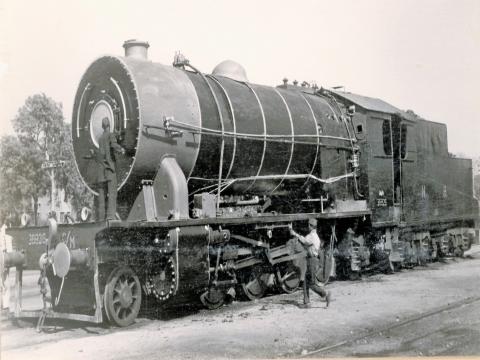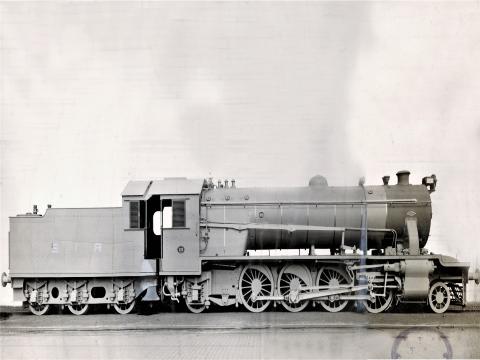After World War I there was a need for updating existing BESA designs and developing more powerful locomotiveS that could use inferior grades of coal. As a result in 1924 the Government set up a Locomotive Standards Committee. The committee after visiting all the Railways and in consultation various manufacturers and BESA developed initially 3 passenger and two goods locomotive apart from shunting engine designs which were manufactured between 1927 and 1929. The main features of the designs was a larger grate area to cater to higher percentage of non-combustible content in coal used and a larger number of axles to bring down axle loads. All these locomotives came to belong to the Indian Railway Standard (IRS) Classes. The various IRS classes that were manufactured at the time are listed below: (Photos Courtesy National Rail Museum, New Delhi.)
| Class Code | Wheel Arrangement | Grate Area Sq.ft. | Axle Load Tons | No. Built |
Branch Passenger | XA | 4-6-2 | 32 | 14 | 113 |
Light Passenger | XB | 4-6-2 | 45 | 17 | 99 |
Heavy Passenger | XC | 4-6-2 | 51 | 19.8 | 72 |
Light Goods | XD | 2-8-2 | 45 | 17 | 194 |
Heavy Goods | XE | 2-8-2 | 60 | 22.5 | 93 |
Light Shunter | XF | 0-8-0 | 30.25 | 17 | 6 |
Hump Yard Shunter | XG | 0-8-0 | 41 | 22.5 | 3 |
Light Shuttle | XT | 0-4-2 | 14 | 14 | 77 |
















